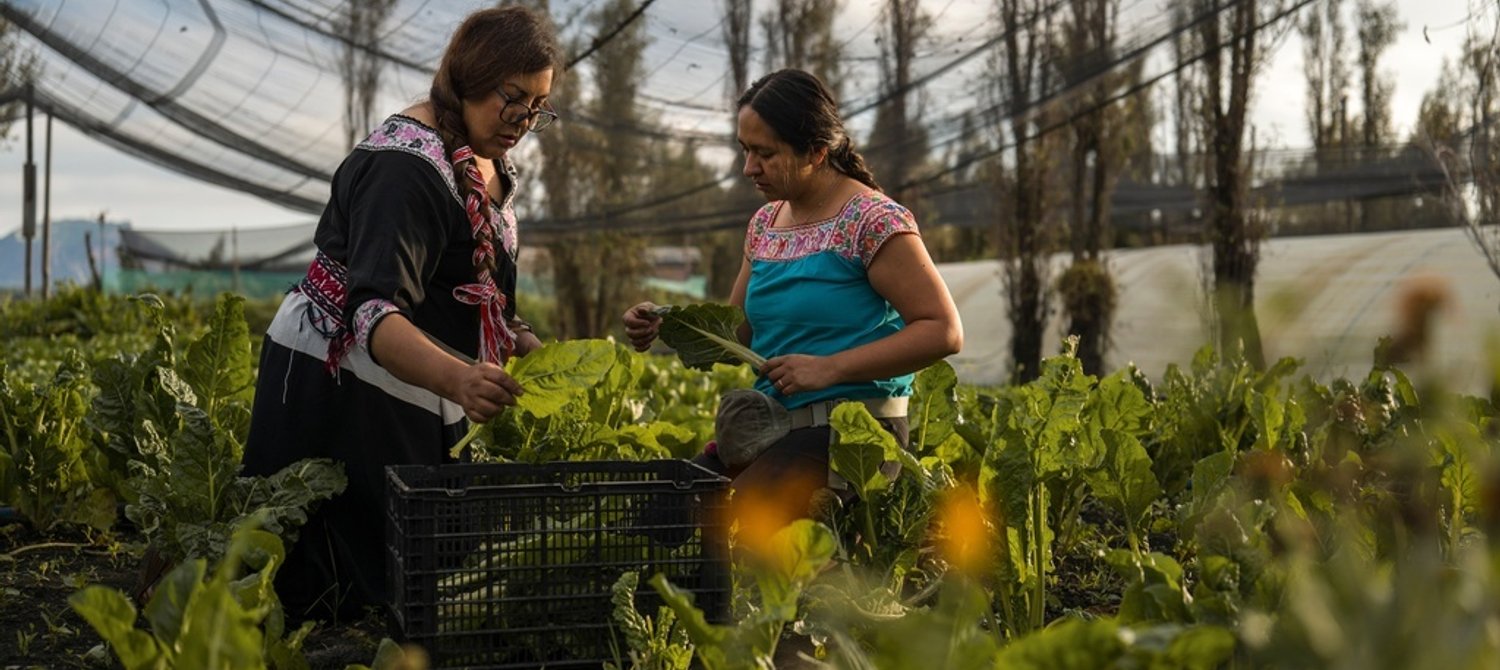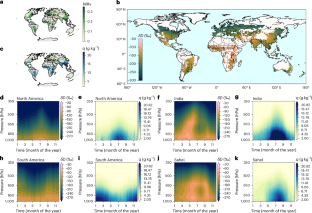Report on the State of the U.S. Agricultural Sector and Alignment with Sustainable Development Goals
Executive Summary
The United States agricultural sector is confronting significant economic and policy-induced challenges that threaten its stability and sustainability. A combination of high production costs, depressed commodity prices, and disruptive trade and immigration policies has created an environment of financial distress, characterized by record farm debt and rising bankruptcies. These developments have profound implications for several Sustainable Development Goals (SDGs), particularly SDG 2 (Zero Hunger), SDG 8 (Decent Work and Economic Growth), and SDG 17 (Partnerships for the Goals). This report analyzes the primary stressors on the sector, including trade tariffs, export market volatility, and labor shortages, and examines the role of government intervention in mitigating these impacts.
Economic Pressures and Sector Viability
Farm Income, Debt, and Profitability
The financial health of the U.S. agricultural sector shows clear signs of stress, undermining progress toward SDG 8, which promotes sustained, inclusive, and sustainable economic growth. While livestock producers have experienced positive returns, producers of major crops like soy, corn, and wheat face slim to negative profit margins.
- Income Stagnation: Net farm income, excluding government support, is forecasted to be flat in 2025. Overall net income projections are buoyed only by disaster relief payments, not by market performance.
- Record Debt Levels: Total farm sector debt is projected to reach a record $386.4 billion in 2025. High interest rates have exacerbated this issue, with interest costs rising 17.7 percent over 2023 levels.
- Rising Bankruptcies: Farm bankruptcies are on pace to exceed 2024 levels, with 181 filed in the first half of 2025 alone, signaling significant economic distress within the sector.
This financial instability directly threatens SDG 2 by jeopardizing the long-term viability of food producers and, consequently, the stability of the food supply.
Impact of Trade Policies on Production Costs
Tariff policies have significantly increased the cost of essential agricultural inputs, placing further pressure on farm profitability and hindering the goal of sustainable production patterns (SDG 12).
- The average effective tariff rate on agricultural inputs has increased from 1 percent to 12 percent as of August 2025.
- Specific inputs face even higher rates, with tariffs on herbicides and pesticides at 20 percent or more.
- Tariffs on tractors and other agricultural machinery have risen from near zero to 16 percent.
International Trade and Market Access
Retaliatory Tariffs and Export Market Disruption
Retaliatory trade measures from foreign nations have severely impacted U.S. agricultural exports, which account for over 20 percent of the value of U.S. agricultural production. This disruption undermines SDG 17 (Partnerships for the Goals) by creating an unstable and adversarial international trade environment.
- Soybean Exports: U.S. soybean producers have been disproportionately affected. China, historically the top buyer, purchased no U.S. soybeans in September and has no future commitments, a situation unseen in two decades.
- Market Share Loss: Competitors such as Brazil and Argentina are increasing their market share in China, indicating a potentially long-term shift in global trade patterns that is detrimental to U.S. producers.
Implications for Global Food Security and Partnerships
The ongoing trade tensions create uncertainty that extends beyond national borders, affecting global food markets and the achievement of SDG 2 (Zero Hunger). Unpredictable trade policies disrupt global supply chains, impact food prices, and weaken the international cooperation essential for ensuring global food security.
Labor Force Challenges and Social Implications
Immigration Policy and Agricultural Labor Shortages
Restrictive immigration policies pose a direct threat to the agricultural labor supply, as undocumented immigrants constitute a significant portion of the workforce, particularly in labor-intensive specialty crops.
- Nearly half of all crop workers are estimated to lack work authorization.
- A notable decrease of 155,000 workers was observed in the agricultural sector between March and July 2025, a reversal from positive trends in previous years.
- The U.S. Department of Labor has formally acknowledged that immigration enforcement could lead to “significant labor market effects,” including intensified labor shortages, higher production costs, and increased reliance on imported food.
Alignment with Decent Work and Economic Growth (SDG 8)
The instability facing the agricultural workforce runs counter to the principles of SDG 8 (Decent Work and Economic Growth). Labor shortages not only reduce sectoral output but also highlight the precarious position of a vulnerable worker population. Policies that fail to ensure a stable and authorized workforce compromise both economic productivity and the well-being of workers, thereby conflicting with the objectives of SDG 8 and SDG 10 (Reduced Inequalities).
Government Intervention and Financial Support
Historical and Proposed Financial Assistance Programs
In response to policy-induced hardships, the U.S. government has previously provided substantial financial relief and is considering new measures. In 2019, the Commodity Credit Corporation (CCC) was used to direct $28 billion in aid to farmers. A new package of $10-14 billion is now under consideration to assist farmers impacted by the current trade environment.
Sustainability of Government Support and Market Distortion
While intended as a buffer, large-scale government support raises concerns about long-term market distortion and dependency. In 2025, an estimated 22.4 percent of farm net cash income is projected to come from federal programs. This reliance on aid rather than market-based revenue is not a sustainable economic model and may impede the sector’s alignment with SDG 8. Furthermore, the current administration faces funding challenges for a new bailout, as the CCC’s borrowing authority has been significantly reduced, requiring alternative and potentially contentious funding mechanisms.
Conclusion and Outlook
The U.S. agricultural sector is at a critical juncture, facing a confluence of economic, trade, and labor pressures that threaten its financial stability and its capacity to contribute to national and global Sustainable Development Goals. Current policies have increased production costs, destabilized key export markets, and created labor force uncertainty. The resulting economic distress undermines SDG 8 (Decent Work and Economic Growth) and poses risks to SDG 2 (Zero Hunger). Moreover, protectionist trade measures directly conflict with the collaborative spirit of SDG 17 (Partnerships for the Goals). Future policy decisions, including any financial assistance packages, must be evaluated for their long-term impact on creating a resilient, sustainable, and equitable agricultural system.
Analysis of Sustainable Development Goals in the Article
1. Which SDGs are addressed or connected to the issues highlighted in the article?
-
SDG 2: Zero Hunger
- The article’s primary focus is on the U.S. agricultural sector, which is central to food production. It discusses challenges that threaten the stability and viability of farming, such as “high input and production costs,” “low commodity prices,” and economic stress on farmers. These issues directly relate to achieving food security and promoting sustainable agriculture.
-
SDG 8: Decent Work and Economic Growth
- The article addresses the economic health of the agricultural sector and the employment within it. It highlights issues like “increased labor shortages,” the sector’s reliance on immigrant and undocumented workers, and the negative economic impacts of trade and immigration policies on sectoral output. This connects to the goal of achieving productive employment and sustainable economic growth.
-
SDG 17: Partnerships for the Goals
- A significant portion of the article is dedicated to the impact of international trade policies on agriculture. It details how U.S. tariffs and “foreign responses to U.S. trade measures” have disrupted global agricultural markets, particularly for soybeans. This directly relates to the goal of fostering a universal, rules-based, and equitable multilateral trading system.
2. What specific targets under those SDGs can be identified based on the article’s content?
-
Under SDG 2 (Zero Hunger):
- Target 2.3: By 2030, double the agricultural productivity and incomes of small-scale food producers. The article directly addresses the income aspect of this target by highlighting “slim or even negative profit margins,” “forecasts of low net farm incomes,” record-high farm debt, and a rise in farm bankruptcies, all of which indicate a decline in the financial well-being of farmers.
- Target 2.b: Correct and prevent trade restrictions and distortions in world agricultural markets. The article’s central theme is the impact of trade distortions. It explicitly discusses the imposition of “a series of tariffs on many products” by the U.S. and the “retaliatory tariffs” from other nations, which have led to a “decrease in certain U.S. agricultural exports.”
-
Under SDG 8 (Decent Work and Economic Growth):
- Target 8.5: By 2030, achieve full and productive employment and decent work for all. The article points to challenges in achieving this target within the agricultural sector. It describes how “restrictive immigration and removal policies” could lead to “increased labor shortages” and notes that “undocumented immigrants comprise a disproportionate share of employment in agriculture,” highlighting a vulnerable workforce. The article also mentions a decrease in agricultural employment by 155,000 in 2025.
-
Under SDG 17 (Partnerships for the Goals):
- Target 17.10: Promote a universal, rules-based, open, non-discriminatory and equitable multilateral trading system. The article provides a case study of actions that undermine this target. The U.S. administration’s use of tariffs under various trade acts and the subsequent “trade tensions” and retaliatory measures from countries like China, Canada, and Mexico are direct contradictions to an open and rules-based trading system.
3. Are there any indicators mentioned or implied in the article that can be used to measure progress towards the identified targets?
-
For SDG 2 Targets:
-
Indicators for Target 2.3 (Incomes): The article provides several quantitative indicators of farmers’ financial health. These include:
- Net farm income (forecast to be flat without government support).
- Total farm sector debt (forecast to increase to “$386.4 billion in 2025”).
- Number of farm bankruptcies (“181 farm bankruptcies in the first half of 2025,” on pace to exceed the 2024 figure of 216).
-
Indicators for Target 2.b (Trade Restrictions): The article mentions specific metrics to measure trade distortions:
- Average effective tariff rate on agricultural inputs (which “had jumped from 1 percent to 12 percent as of August 2025”).
- Volume of agricultural exports (China had purchased “no soybeans at all” from the U.S. in September, compared to over 3.5 million metric tons in previous years).
-
Indicators for Target 2.3 (Incomes): The article provides several quantitative indicators of farmers’ financial health. These include:
-
For SDG 8 Target:
-
Indicators for Target 8.5 (Employment): The article implies and states indicators related to agricultural labor:
- Share of migrant/undocumented workers in the agricultural labor force (“nearly half lack work authorization”).
- Change in agricultural employment (a decrease of “155,000” from March-July 2025).
-
Indicators for Target 8.5 (Employment): The article implies and states indicators related to agricultural labor:
-
For SDG 17 Target:
-
Indicators for Target 17.10 (Trade System): The article provides clear indicators of trade protectionism:
- The imposition and level of tariffs on specific goods (e.g., “effective tariff rates on herbicides and pesticides are 20 percent or higher,” while tariffs on tractors rose to “16 percent”).
- The existence of retaliatory tariffs threatened or imposed by trade partners (Canada, the EU, and Mexico are mentioned).
-
Indicators for Target 17.10 (Trade System): The article provides clear indicators of trade protectionism:
4. Summary Table of SDGs, Targets, and Indicators
| SDGs | Targets | Indicators |
|---|---|---|
| SDG 2: Zero Hunger |
2.3: Double the agricultural productivity and incomes of small-scale food producers.
2.b: Correct and prevent trade restrictions and distortions in world agricultural markets. |
– Net farm income levels. – Total farm sector debt ($386.4 billion). – Number of farm bankruptcies (181 in H1 2025). – Average effective tariff rate on agricultural inputs (rose from 1% to 12%). – Volume of soybean exports to China (zero in September 2025). |
| SDG 8: Decent Work and Economic Growth | 8.5: Achieve full and productive employment and decent work for all. |
– Share of undocumented workers in the agricultural workforce (nearly half). – Change in agricultural employment (a decrease of 155,000). |
| SDG 17: Partnerships for the Goals | 17.10: Promote a universal, rules-based, open, non-discriminatory and equitable multilateral trading system. |
– Imposition of tariffs on agricultural inputs and other products. – Specific tariff rates (e.g., 20% on herbicides, 16% on tractors). – Existence of retaliatory tariffs from trade partners (China, Canada, EU, Mexico). |
Source: econofact.org







